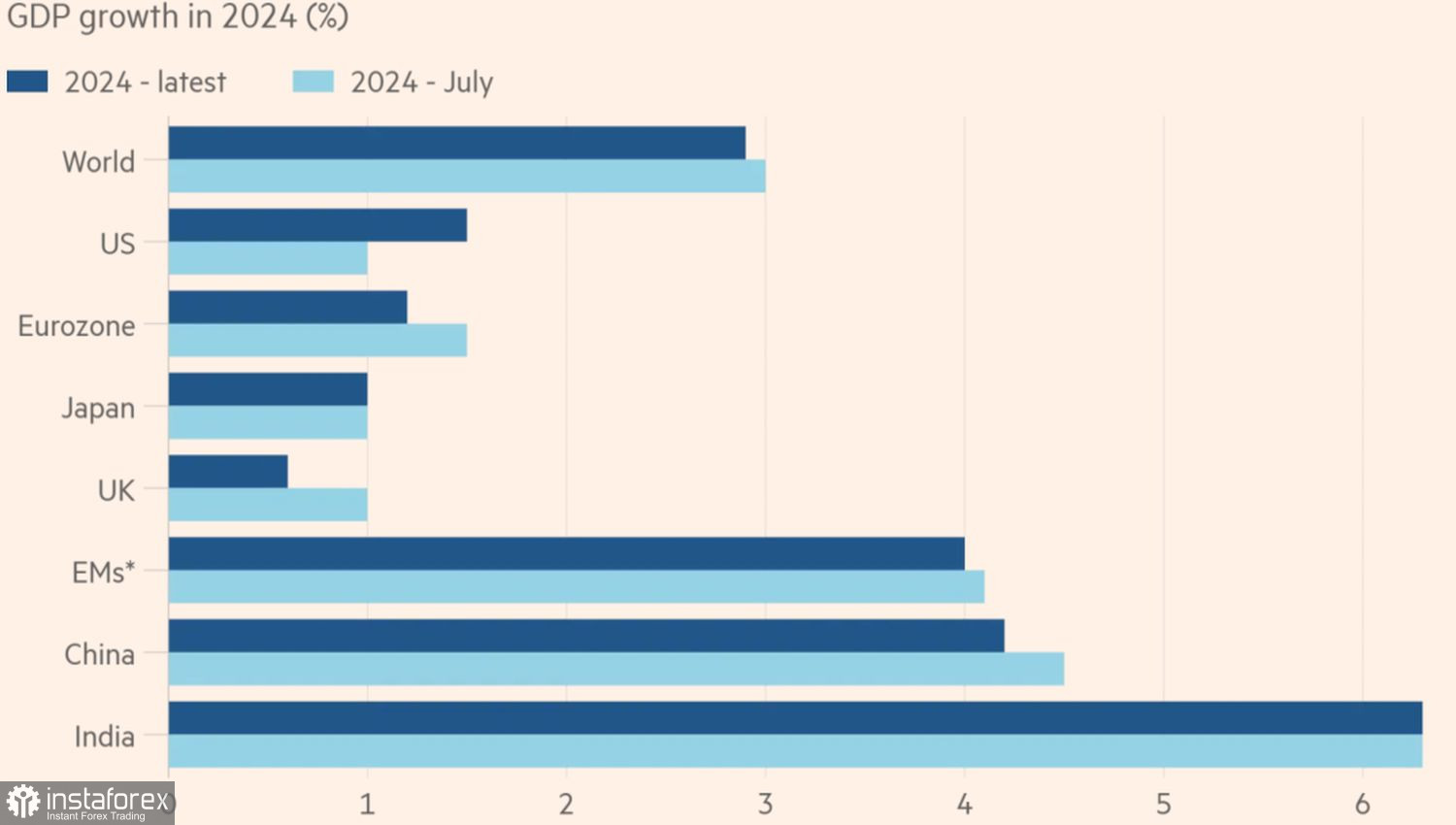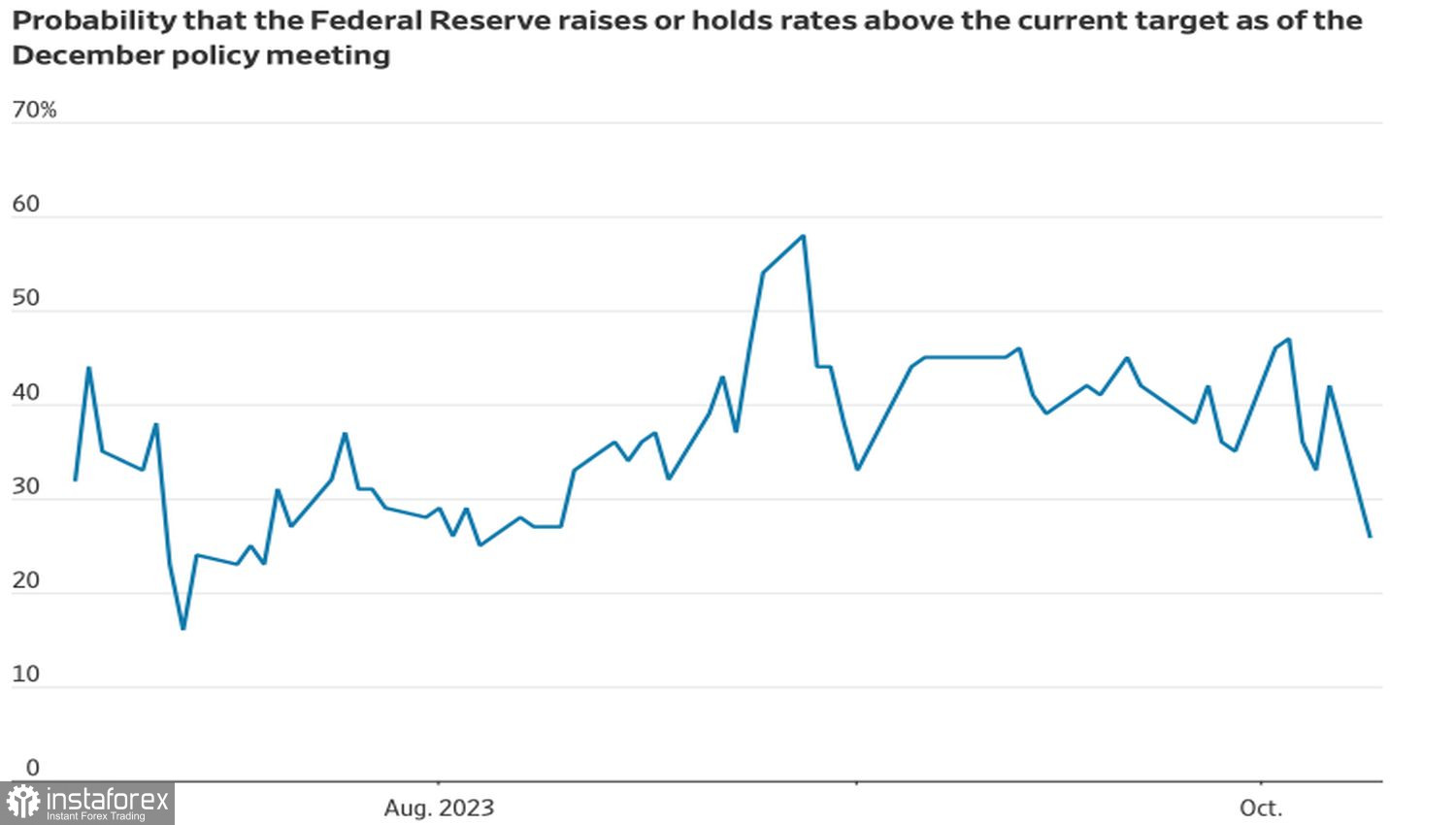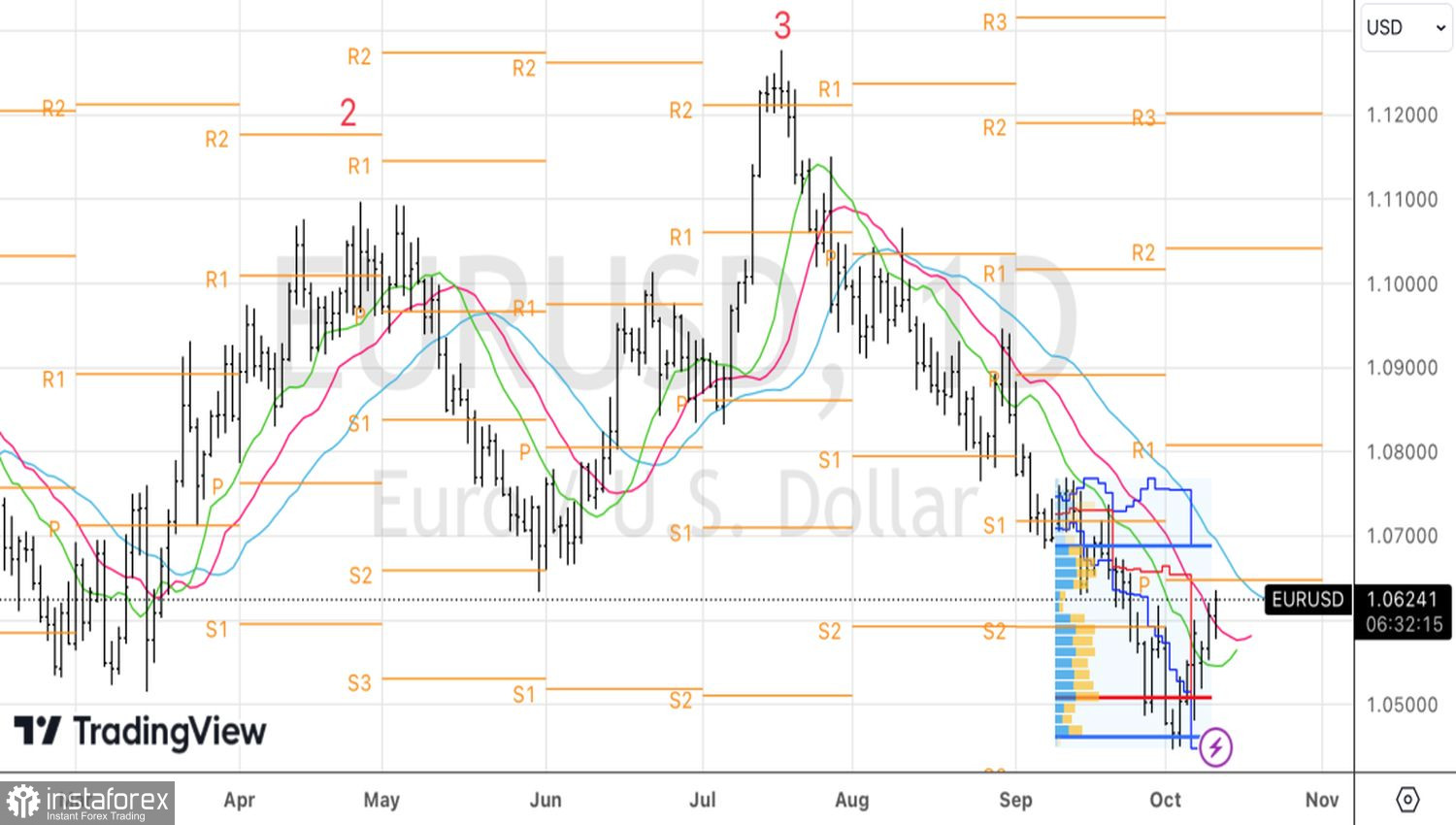The decline in U.S. Treasury bond yields creates an excellent opportunity for a bullish counterattack. However, the euro has several vulnerable points that restrain buyers' offensive. Italian profligacy leads to increased political risks in the Old World, and the problems in the Eurozone's economy have not disappeared.
The main drivers behind the EUR/USD peak from July levels are the divergence in economic growth between the U.S. and the Eurozone, as well as differences in the monetary policies of the Fed and the ECB. While the European Central Bank has hinted that the monetary tightening cycle is over, the FOMC's September forecasts implied another rate hike for the federal funds. Nevertheless, in October, Federal Reserve officials started to talk about the lack of necessity to do so due to the rapid rally in U.S. Treasury bond yields. This deprived the dollar of a crucial advantage.
However, no one canceled the divergence in economic growth. The International Monetary Fund raised its GDP forecast for the U.S. in 2023 and 2024 to 2.1% and 1.5%, and lowered its estimates for the Eurozone to 0.7% and 1.2%. The IMF is not very optimistic about China either. According to this authoritative organization, China's economy will expand by 5% this year and by 4.2% next year. This is less than what was expected in previous forecasts, which is bad news for the export-oriented currency bloc.
IMF Forecasts

Not very good news for the euro is also coming from Italy, where the government of Giorgia Meloni announced a larger budget deficit for 2024-2025, and EU requirements for this indicator will only be met by 2026. As a result, the yield spread between Italian and German bonds soared to 211 bps. According to a Bloomberg insider, an increase of more than 250 bps will force the ECB to intervene in the debt market. The interest rate differential for European country bonds is seen as a key indicator of political risk. An increase in this spread acts as a restraining factor for "bullish" attacks on EUR/USD.
Thus, if not for the weak Eurozone economy and the rising political risks in Europe, the main currency pair would be trading significantly higher. Its further dynamics will depend on the development of the armed conflict in Israel and the speed of reducing the chances of a rate hike in 2023. In a week, the probability of resuming the monetary restriction cycle dropped from 40% to 28%.
Market rate hike expectations


Israel's invasion of Gaza will further push down Treasury bond yields and, consequently, weaken the U.S. dollar. Non-hawkish rhetoric of the FOMC's September meeting minutes and a slowdown in American inflation could have the same effect.
Technically, the bulls' counterattack continues on the EUR/USD daily chart. Buyers are slowly but surely moving towards the upper limit of the fair value range of 1.046-1.069. For now, we are holding onto long positions formed from 1.0575, and then we will consider reversing.
 English
English 
 Русский
Русский Bahasa Indonesia
Bahasa Indonesia Bahasa Malay
Bahasa Malay ไทย
ไทย Español
Español Deutsch
Deutsch Български
Български Français
Français Tiếng Việt
Tiếng Việt 中文
中文 বাংলা
বাংলা हिन्दी
हिन्दी Čeština
Čeština Українська
Українська Română
Română

